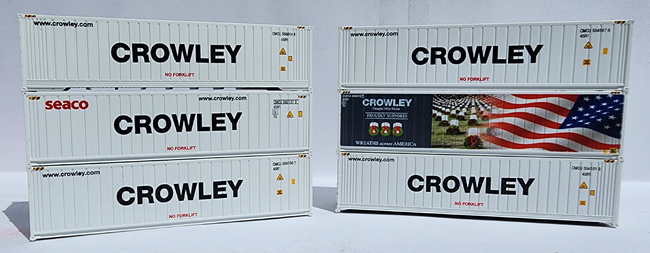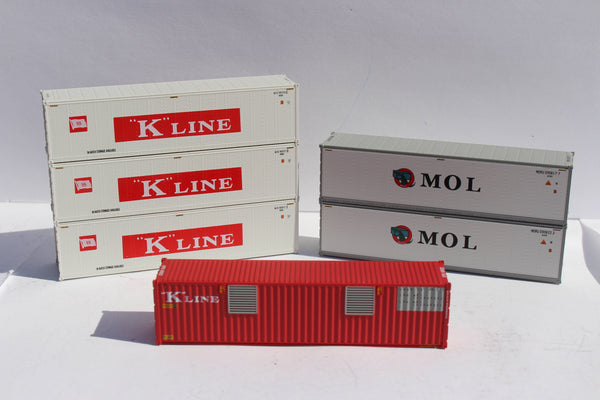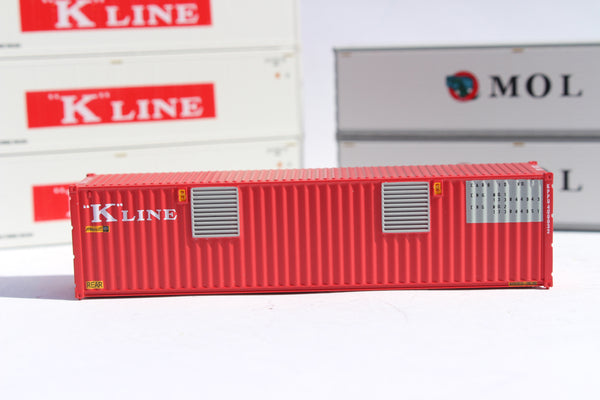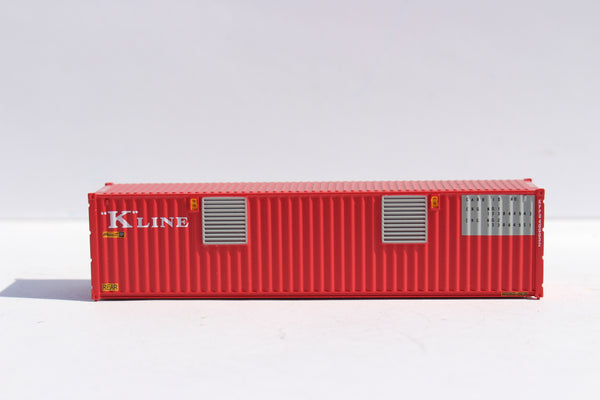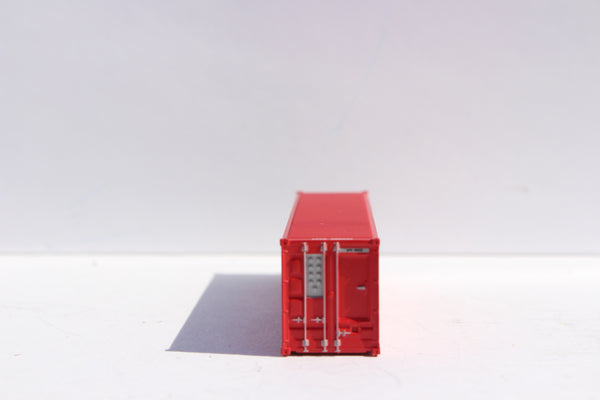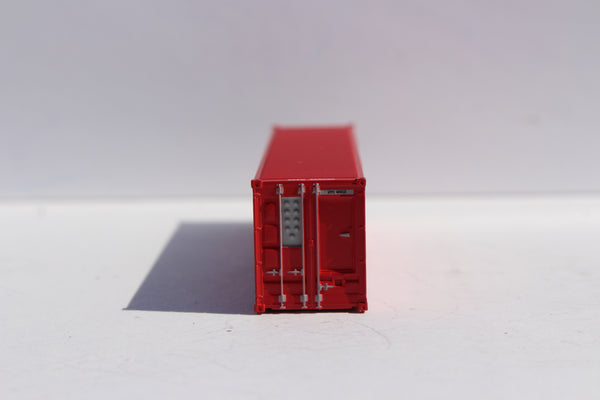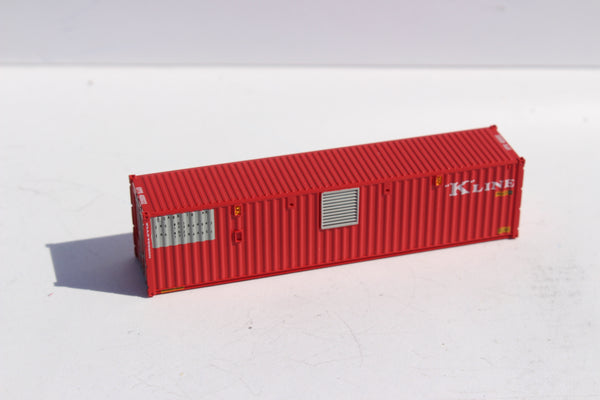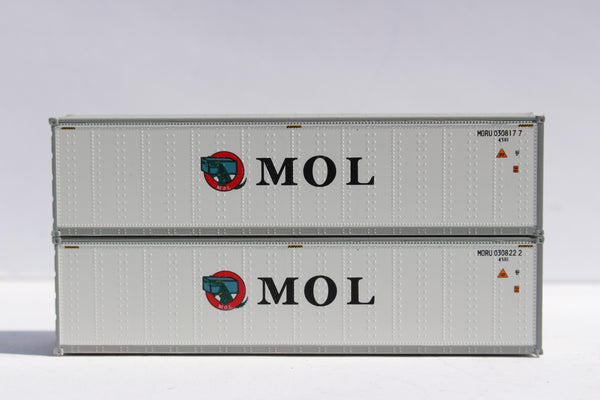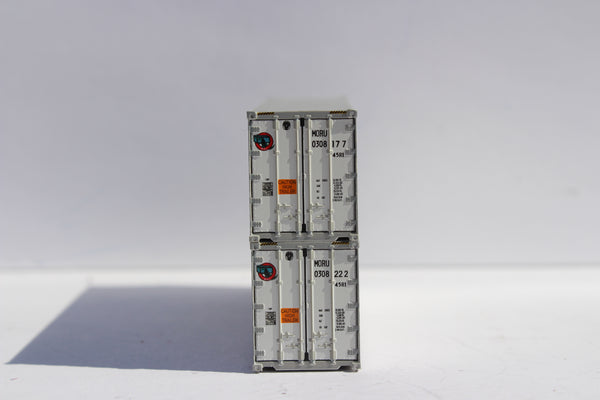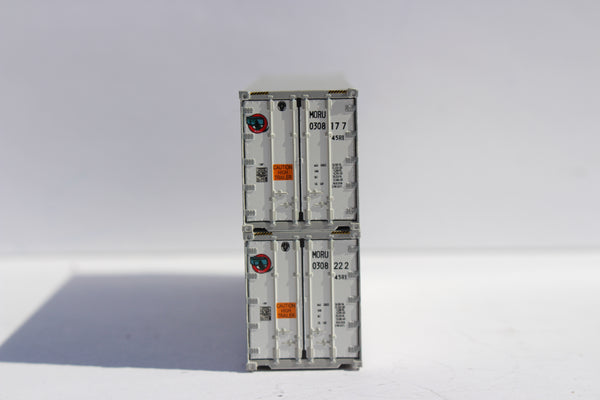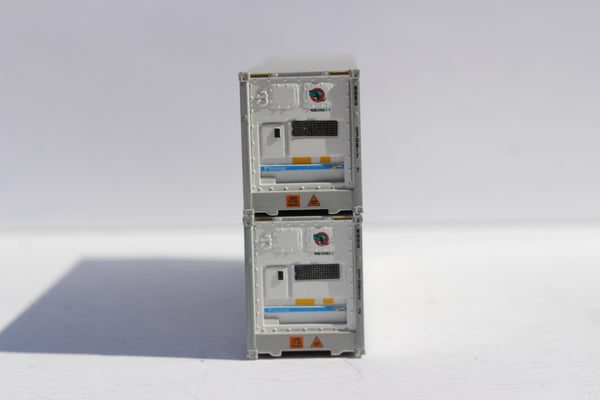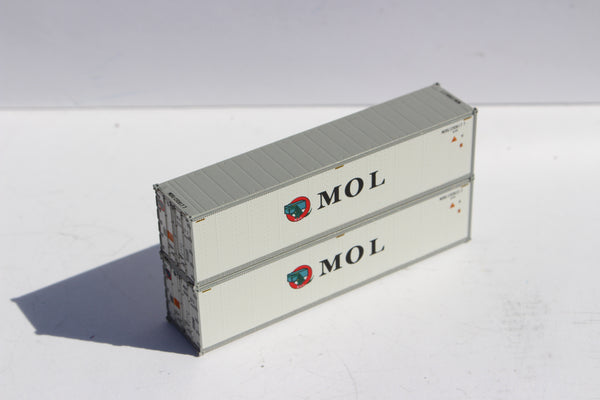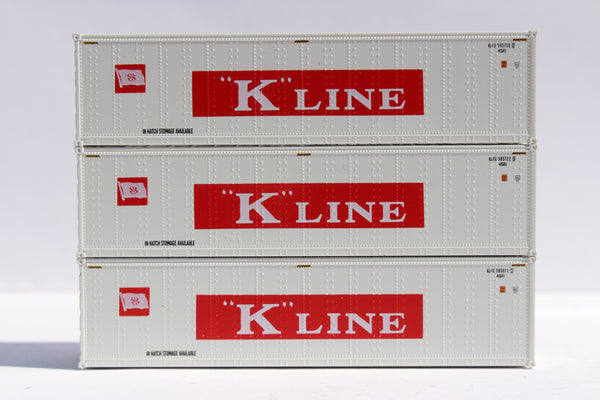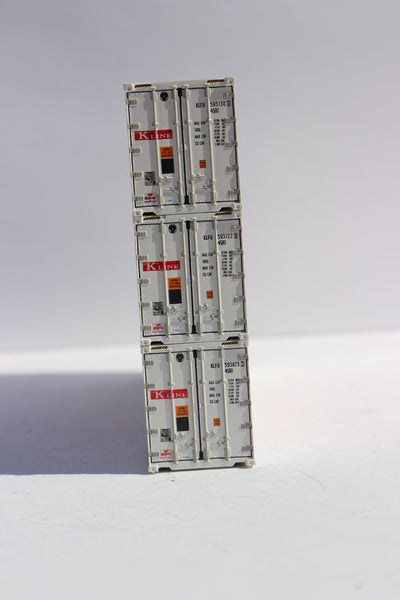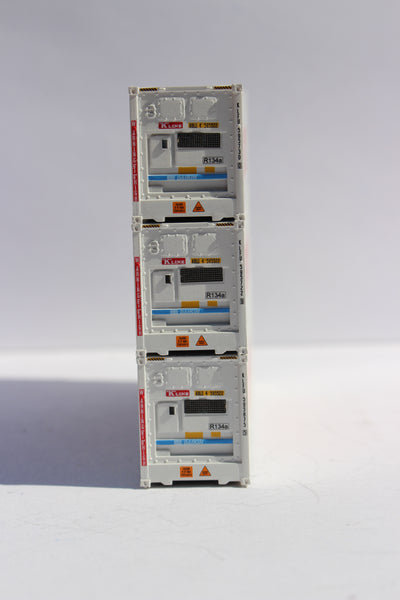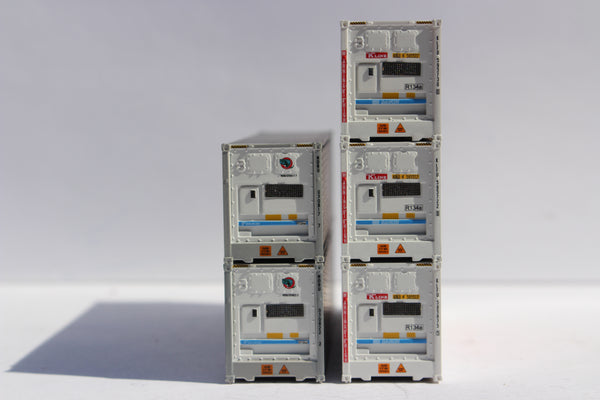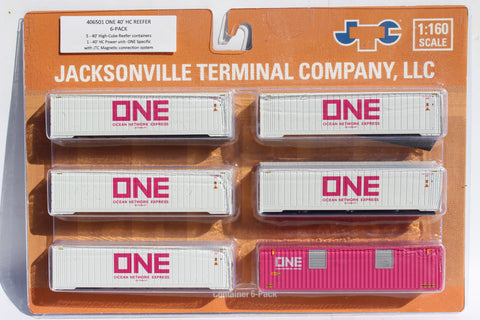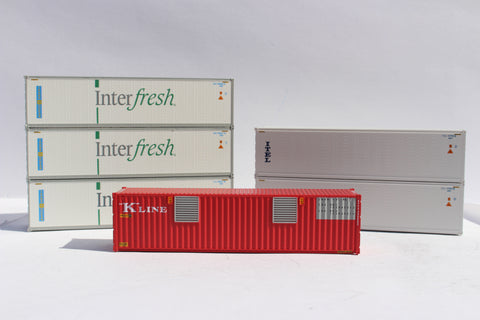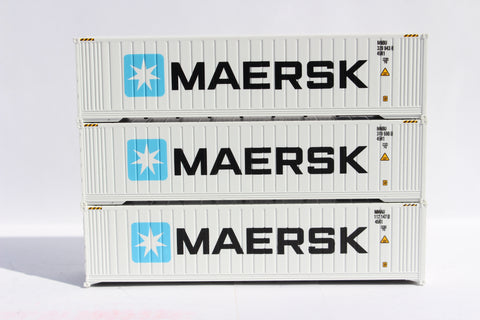K Line and MOL Scheme 40' HC Reefer Set (5 reefers, 1 power generator) JTC# 406507
K Line and MOL scheme specific tooling for the reefer and K Line power generator unit. The six pack contains 3 K Line reefer units, 2 MOL reefer units all different reefer numbers and single K Line power unit number.
Power pack KPPO 400032
KLFU 595875 5, 595722 9, 595730 0
MORU 030831 0, 0300817 7
Kawasaki Kisen Kaisha, Ltd. is a Japanese transportation company. It is the fourteenth largest container transportation and shipping company in the world. In 2017, K Line, Nippon Yusen (NYK) and Mitsui O.S.K. Lines (MOL) announced that they would merge and jointly operate their global container shipping services as Ocean Network Express (ONE).
MOL (Mitsui O.S.K. Lines) was founded in 1964, following the merger of Osaka Shosen Kaisha (OSK) (Osaka Shōsen Kabushiki-gaisha) founded in 1878, and Mitsui Steamship Co., Ltd. founded in 1942, formerly Mitsui Line, under the Law Concerning the Reconstruction and Reorganization of the Shipping Industry. At that time the company was the largest shipping company in Japan.
Soon after the shipping industry reorganization of 1964, in which Japanese shipping companies were restructured into six groups, world shipping moved toward containerization. Mitsui O.S.K. Lines, Ltd. (MOL), formed by the merger of OSK and MS, began container services on the California route, joining a space-charter consortium of four Japanese operators.
Business results improved after the merger. The company was recapitalized in 1968, and in 1972. The owned fleet increased to 152 vessels, in 1974, and the operating fleet—owned vessels and time-chartered vessels—numbered 291 vessels.
Containerization
The first container ship, MOL's America Maru, sailed from Kobe to San Francisco in October 1969. Containerization spread to other routes, including the Australia route, with NYK and Yamashita-Shinnihon Steamship Co., in 1970; the North Pacific route, with five other Japanese companies, in 1971; and the Europe route, as part of the TRIO Group consisting of MOL, Nippon Yusen Kaisha, Overseas Container Line, Ben Line, and Hapag-Lloyd, in 1971. On the New York route and Mediterranean routes a container service began in 1972.
The New York route became the most competitive because of this trend toward intermodal forms of transport. NYK, Y.S.S.(Yamashita-Shinnihon Steamship Co.)--later merged with Japan Line to establish Nippon Liner Systems for liner business and Navix Lines for tramp business—and MOL began a joint operation service in 1986 and put on it six high-speed large vessels including MOL's Alligator series ships. To improve services, MOL introduced a computer booking system in 1984 and enlarged its online system to cover the United States and the Far East in 1986. This route, however, became lossmaking after 1986, seriously affecting the company's performance; MOL did not pay dividends between 1987 and 1989.
Mitsui OSK Lines, Kawasaki Kisen Kaisha, and Nippon Yusen Kabushiki Kaisha agreed to merge their container shipping business via establishing a completely new joint venture company. The integration included their overseas terminal activities. The new joint venture company operating under the name "Ocean Network Express" from 1st of April 2018, has the holding company office in Tokyo, global headquarters in Singapore and regional headquarters in United Kingdom (London), United States (Richmond, VA), Hong Kong, and Brazil (Sao Paulo).
Product Features:
- Scheme specific tooling
- 8 different prototype refrigeration units
- 4 different prototype doors
- 5 different prototype body styles
- Metal and magnetic connection for stacking
- Metal inside of front reefer unit for genset modeling
- New prototype bottom with exposed rib support beams
- Separately applied metal fan cover
- IBC(Inter-Box Connecting pins) in scale ISO 40' locations
- JTC Magnetic connecting system: magnets on bottom & metal top plates
- The IBC pins Mate with JTC 40' open top containers with Magnets, JTC 20' containers with Magnets; Atlas 40 container, and future Jacksonville Terminal Company containers.
- Compatible with JTC Retro-fit underframe kits to stack M-T and S-T brand containers on top.
- Packaging can be used for long term storage
